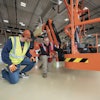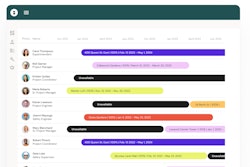
If you’re doing things right, you’ve got a thought-out interview process and you’re spending time to select the right talent for your team. But, you’re not done once you’ve found them. Finding the right person is just the first step. Once they are on board, you’ve got to train them!
Great people can only do so much on their own. Without the right processes and systems in place, including adequate knowledge of those processes and systems, your team will not reach their full potential.
Key Components to a Good Training Program
It is important to formalize your training program. Have a plan. Even if you’re only hiring a few people per year, the investment in developing a formal training program will be worth the effort. Here are some key considerations when developing a training program.
- Training Point of Contact – Have someone responsible for overseeing the training of each new hire. Whether this person is performing all the training with the employee, this person should be responsible for developing the training plan, coordinating the schedule with appropriate parties, and checking in on the new hire’s progress. This POC may be the new hire’s manager or it may be someone who’s role is to oversee the training of all new hires.
- Consistent Schedule – For each new hire that starts, there should be a training schedule template that is used to develop their individualized training program. You want to ensure that all new hires who start with your company are trained in the same manner. Set out a Week 1, Week 2, and Week 3 schedule. Some companies may need a 6-Week training program, while others may only need to formalize 2 weeks. No matter the complexities in your business, take time to develop a well-thought-out plan for showing your new hires the ropes.
- Systematize – When possible, systematize your training. If you need to train every new hire on your project management software, create a video of you training someone on the key components. This will ensure that every employee is trained on the same content and in the same manner. This also gives team members something they can refer back to after they have completed their formal training. Systematizing your training saves time, creates consistency, and provides ongoing support.
- Provide Refreshers – Starting any new job can be daunting, no matter how good your training program is. When new team members are being trained, they don’t have the background information and context to fully grasp every aspect of what they are learning. Providing a refresher training regularly can help team members to apply the knowledge they’ve learned through the formal training as well as the on the job training, allowing the information to “click”. Everything makes more sense after you’ve had some time under your belt.
Tips & Tricks
- Make sure your training program includes a general overview of the business, your history, why you exist, and where you’re heading.
- Provide an initial overview of the systems & tools used in the business, but don’t dive too deep until the team member has had the opportunity to see your operations. This will help them to utilize the systems more effectively.
- Create a training vault or repository to store your training videos, schedules, handouts, and templates.
- Review your training program annually to update as your business evolves and systems change.
Don’t skimp on your training program. Inadequate training can lead to less productivity, disgruntled customers, and employee turnover. The investment on the front-end is worth the long-term benefit.




















